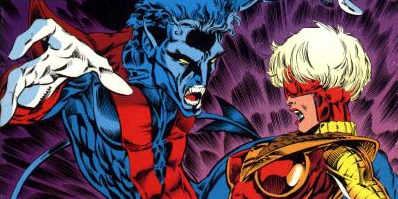Excalibur #73
“Memories Are Made of This”
Writer: Richard Ashford
Pencils: Terry Shoemaker
Inks: Randy Elliott
Colours: Pat Garrahy & Chris Matthys
Letters: Pat Brosseau
Editor: Suzanne Gaffney
Original publication date: January 1994
We have always lived in the ‘90s. Or so it seems, when we’re this Ken-and-Barbie-doll-crotch deep in strange and violent and occasionally baffling eroticisms that challenge the vocabulary of our stalwart crew a time or two. But like the heroes we are, we persevere, combining our powers with those of fabulous returning guest Dr. Charlotte J. Fabricius to unpack all the non-existent packages in Excalibur #73, “Memories Are Made of This,” in which Siena Blaze keeps blazin’, Rachel is a one-woman environment club, and Rory is still obviously Ahab. Featuring digressions on Nightwing and Penthouse Comix that are totally relevant, we swear!
Content Warning: The episode discusses sexual violence.
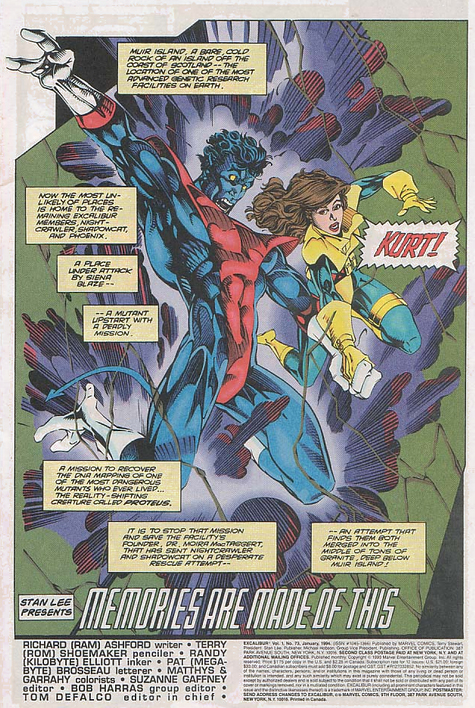
On gender and excess:
“The 90s envisioned a particular kind of fit male body very linked to patriarchal norms… at the same time, there’s a revelling in what happens when you take that ideal to extremes… there’s an excess that seems to want out.” -Charlotte
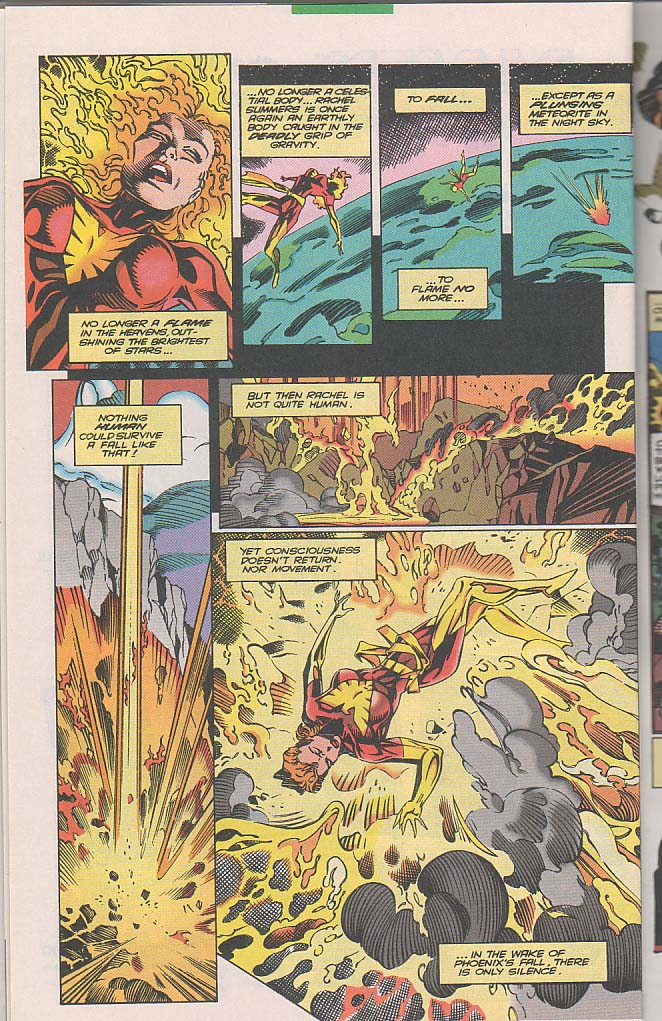
On erotic atmospheres:
“Eroticism permeates 90s art but often in a very unfocused way. It’s not pornography, people aren’t having sex on panel. But it’s a diffuse, erotic atmosphere.” -Anna

On That Cover:
“The cover is suggestive of a very aggressive type of sexuality that isn’t about sex but is about violence.” -Charlotte
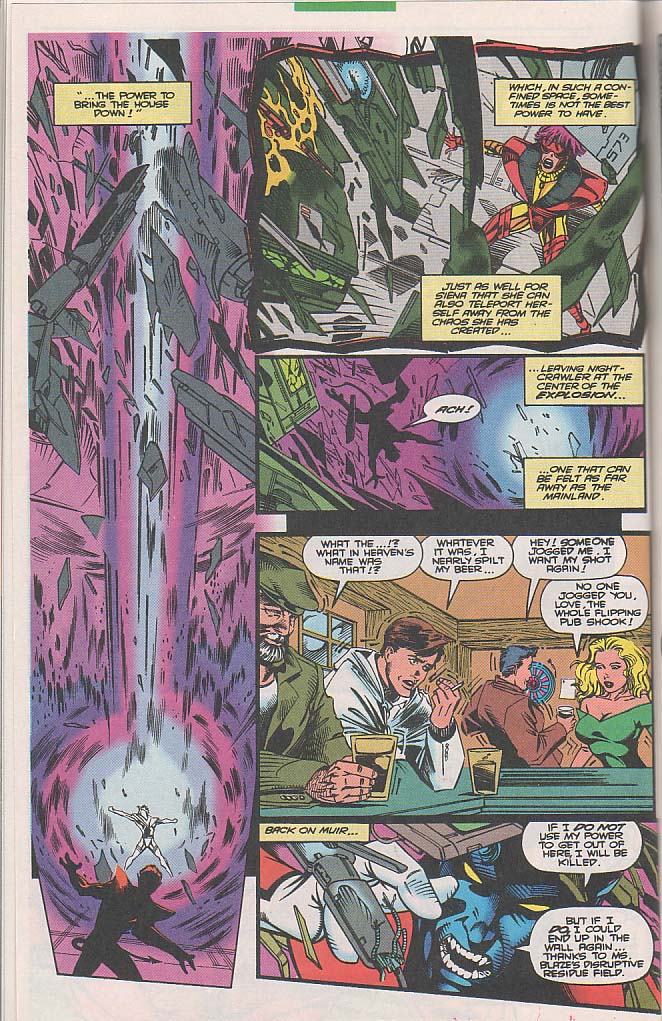
On SYMBOLISM:
“In a lot of 90s art, arms and legs and energy beams become dicks but dicks don’t exist.” -Anna
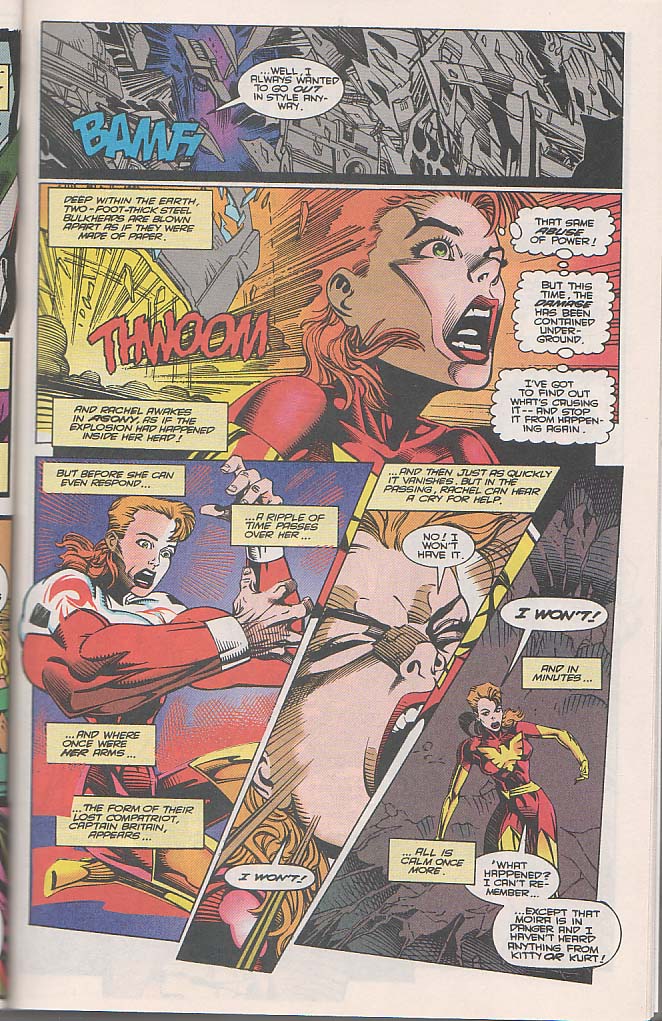
On post-classical bodies:
“The excessive bodies in 90s superhero comics are connected to the rise of the ‘post-classical bodybuilder,’ who rejected symmetry in favor of exaggeration (with the help of steroids).” -Anna
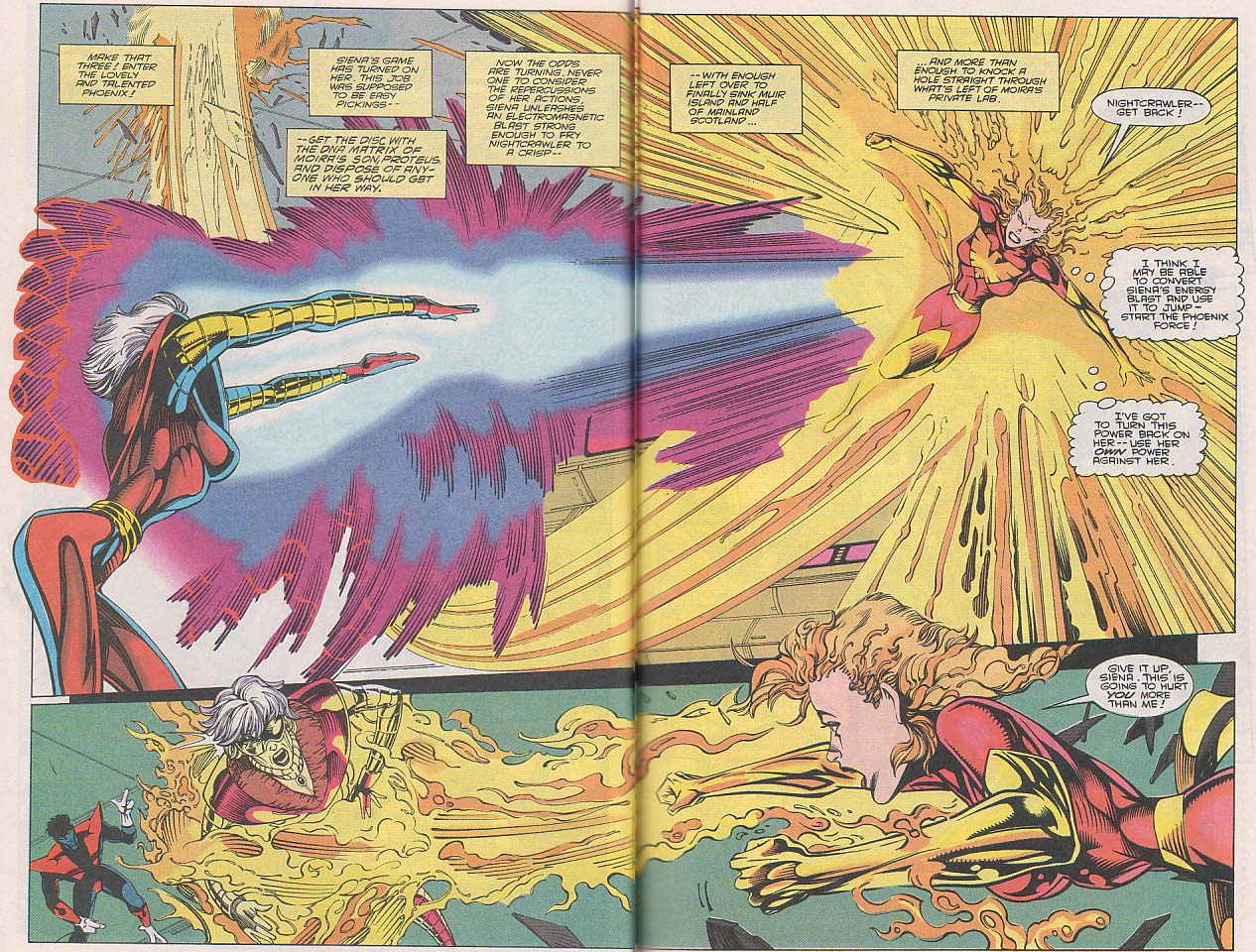
On excessive heroes vs excessive villains:
“In the 90s, as heroes become more excessive, villains often become even more excessive, even more deviant… and we can look to that to understand which types of power we find acceptable.” -Charlotte
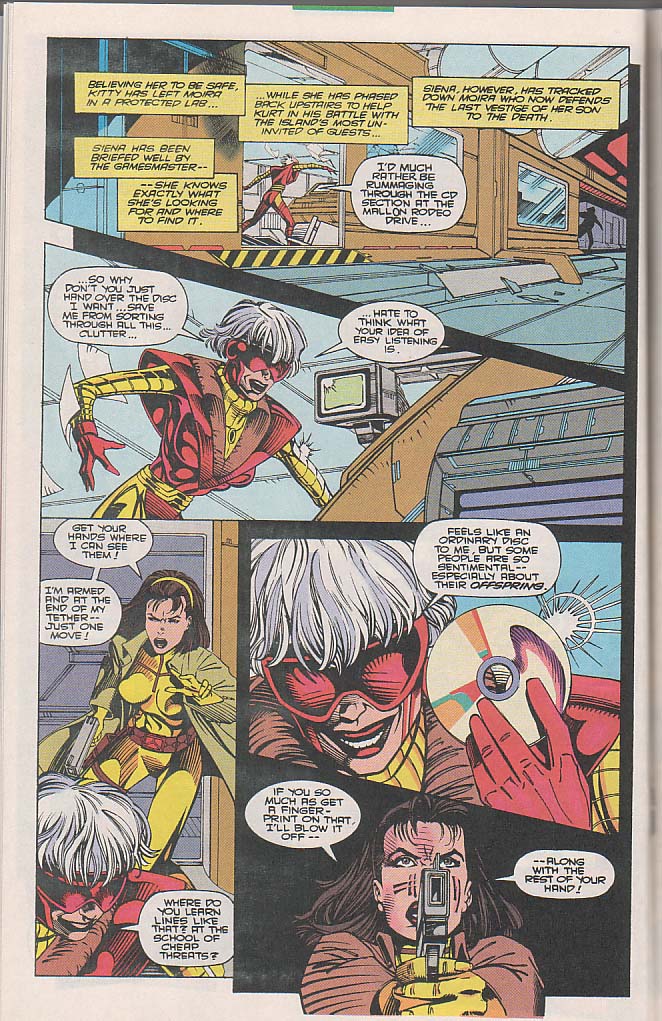
On motivations (or lack thereof):
“The emphasis on visual storytelling during this era ties in with Bob Harras wanting to mute some of the metaphors in the franchise… The X-Men are good and the Upstarts are evil because the X-Men are good and the Upstarts are evil. There’s no compelling reason for them to fight.” -Mav
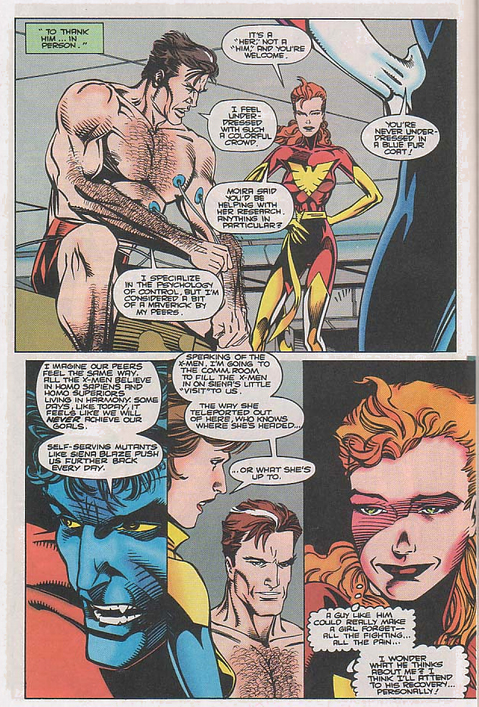
On disappointing conclusions:
“Rachel is extremely powerful in this comic… which made it so disappointing that the end result is her being reduced completely to someone who idealizes her abuser.” -Charlotte
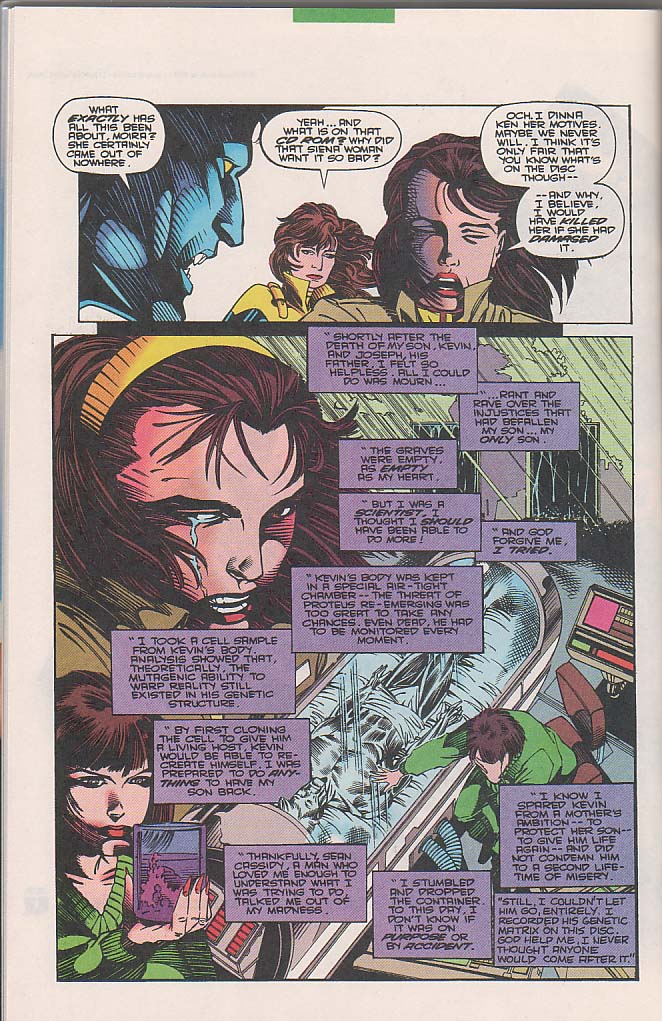
On effective captions:
“Claremont’s prose has a hidden efficiency to it… He’s able to incorporate a whole lot of character development, a little bit of travel literature, a clear establishing of stakes, and character dynamics and relationships… Ashford feels like a neural network trying to write Claremont.” -Andrew

Want more Charlotte Fabricius?
Find her on Twitter (@CharlotteJFab).
Plus! Check out her very fabulous (open access!) article “Precarious Lines. Heroism and Hyper-capability in 90s Nightwing Comics.”
You can also find her book chapter “New and Improved? Disability and Monstrosity in Gail Simone’s Batgirl“ in the anthology Monstrous Women in Comics. (Co-edited by previous podcast guest Dr. Sam Langsdale!)
And as usual:
You can find Anna on Twitter (@peppard_anna) and at Sequential Scholars (@seqscholars).
You can find Andrew on Twitter (@ClaremontRun) and at Sequential Scholars.
You can find Mav on Twitter (@chrismaverick) and on his podcast, VoxPopcast (@VoxPopcast).
Enjoy!
-GGW Team

